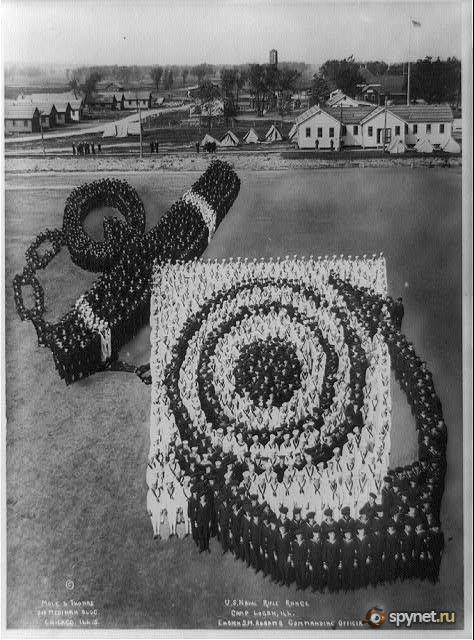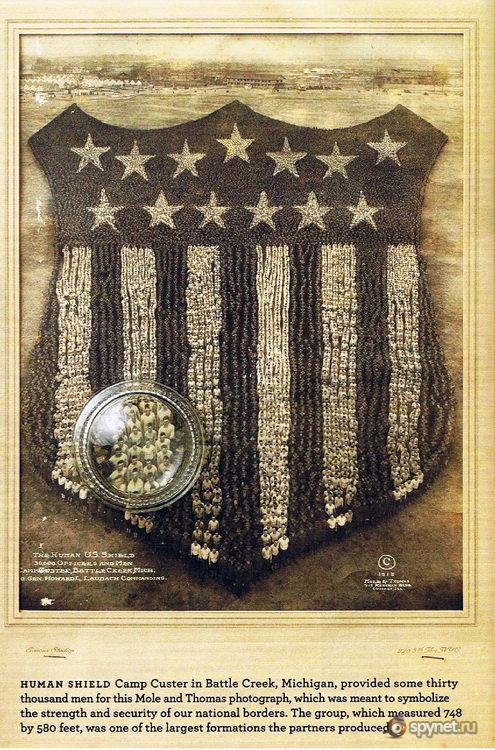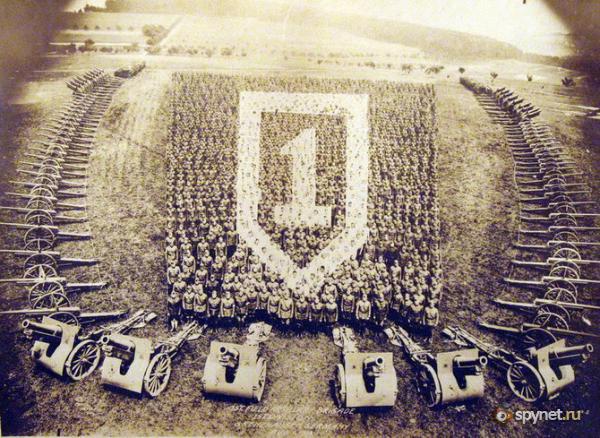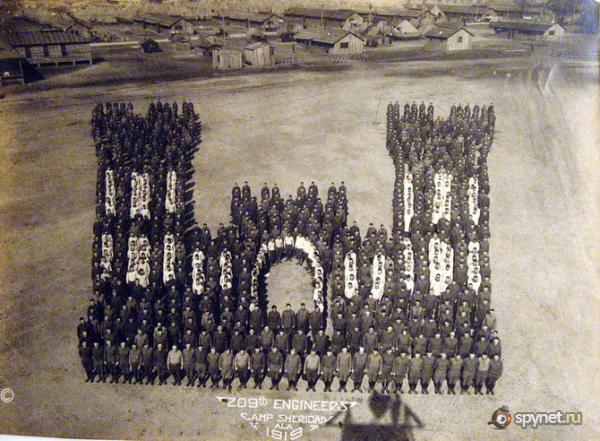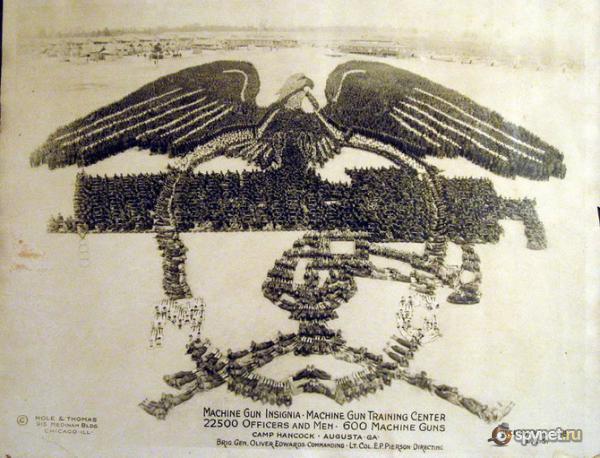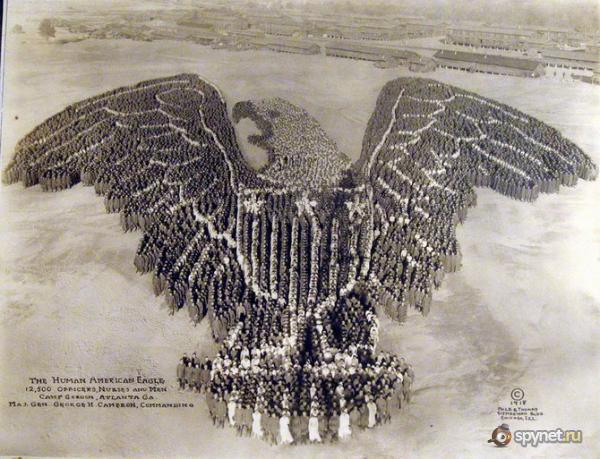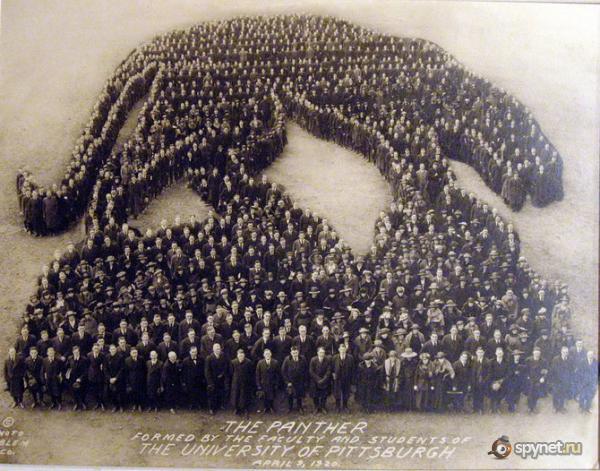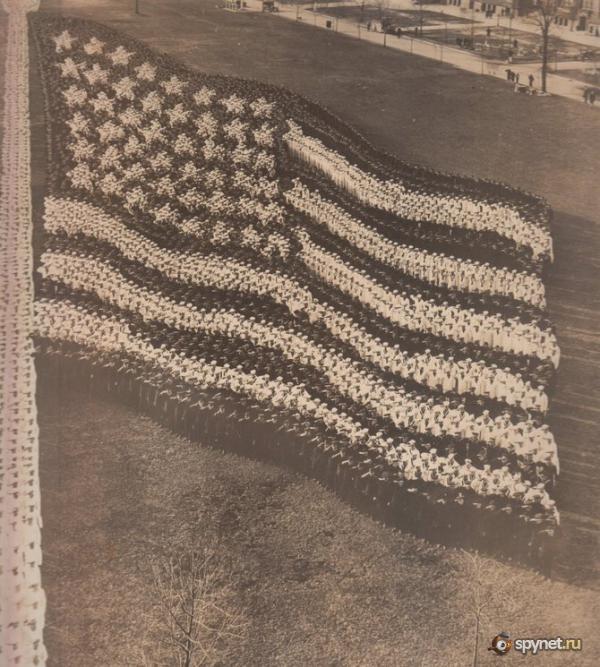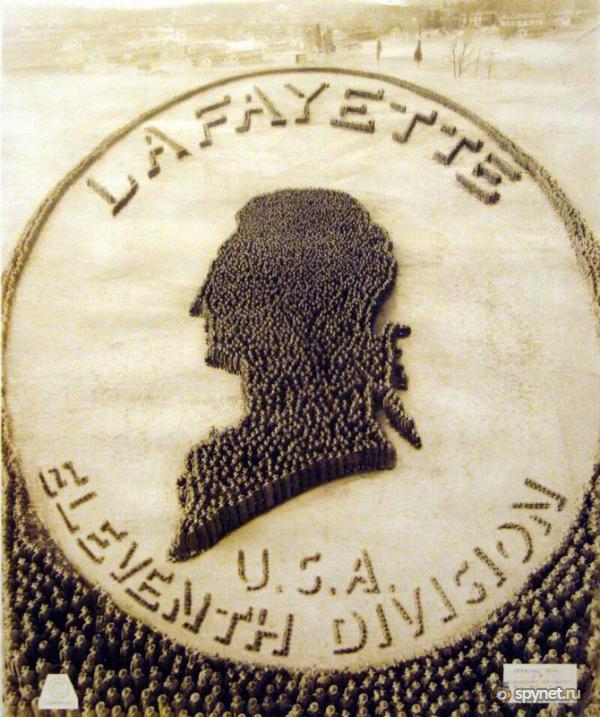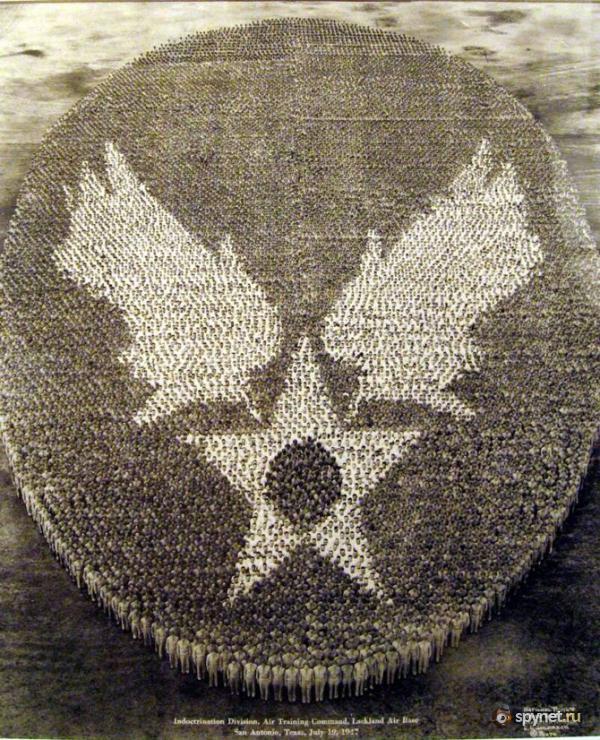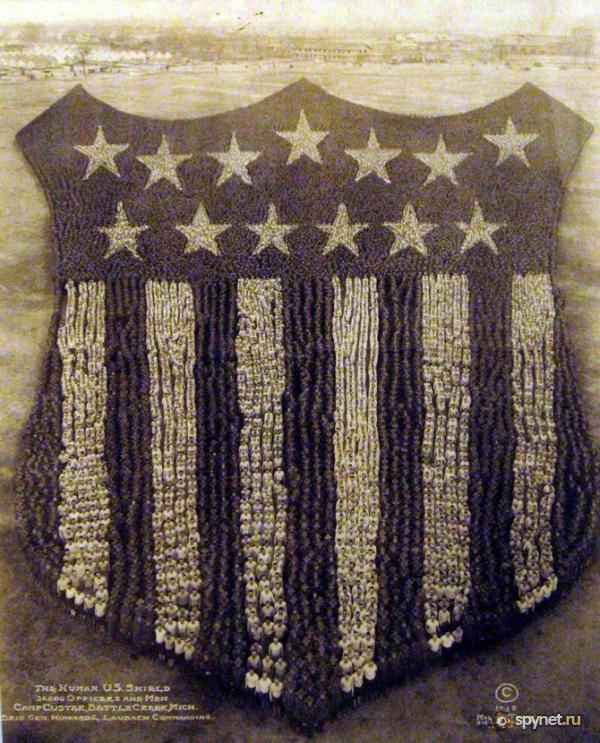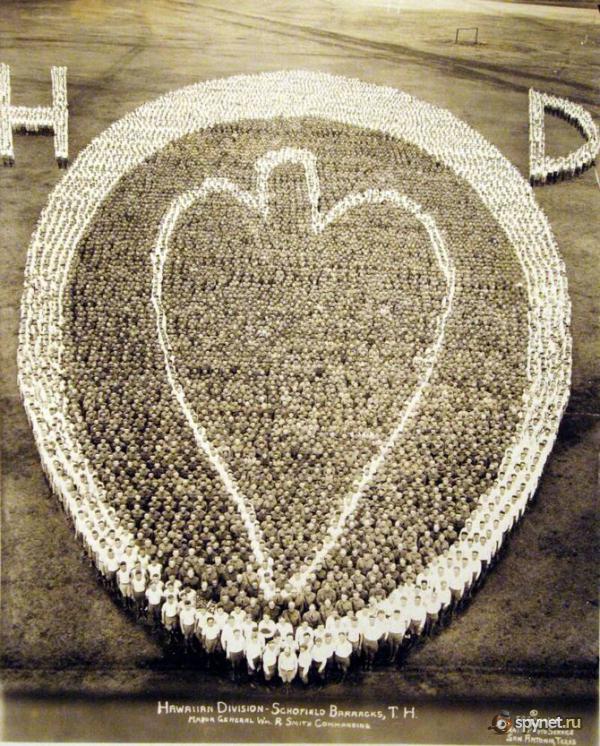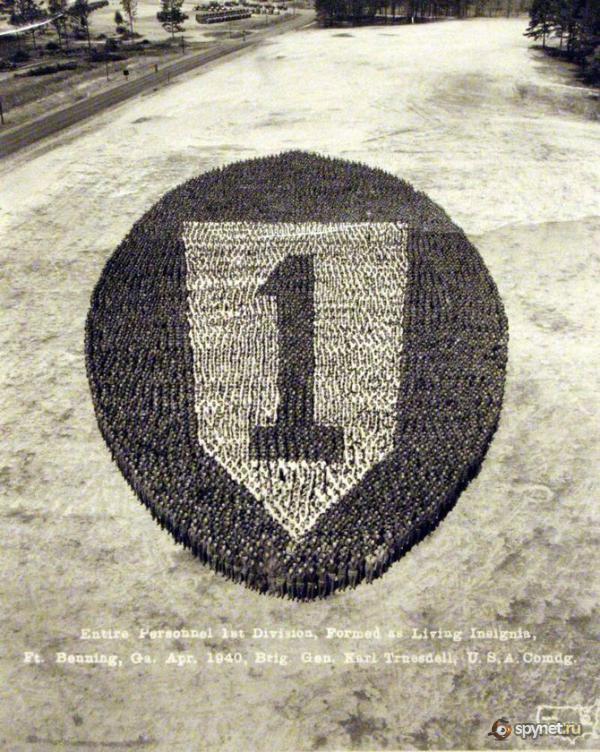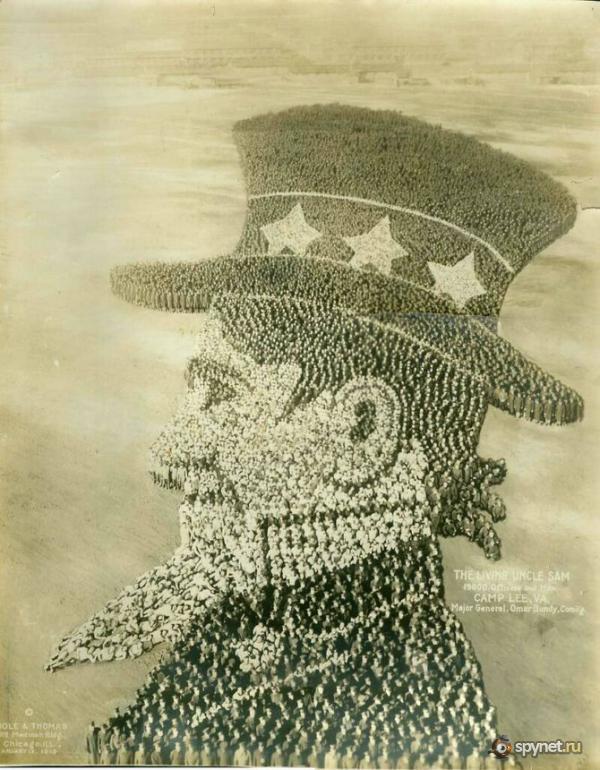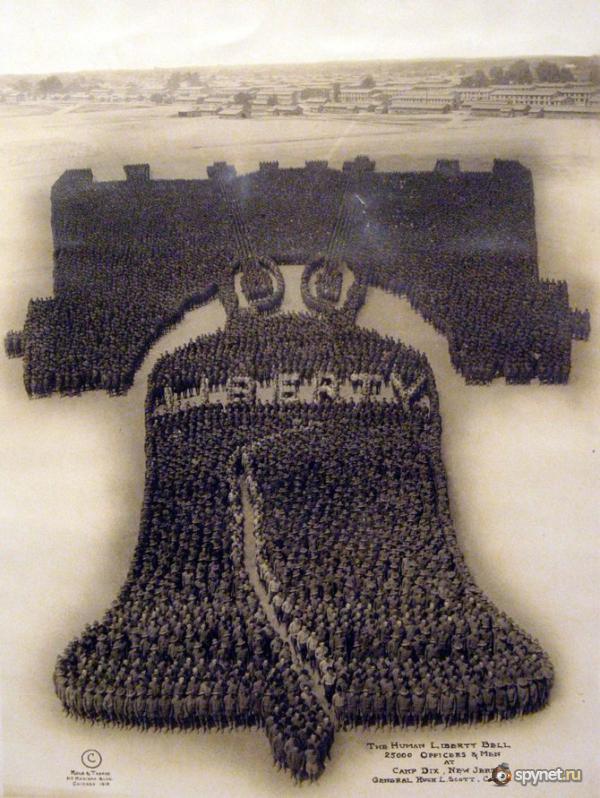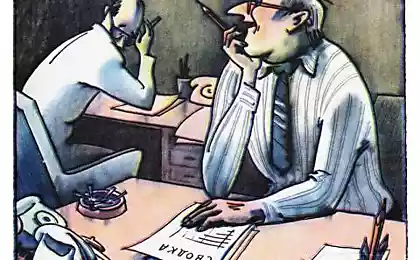1392
Almost a hundred years ago, without any computer processing
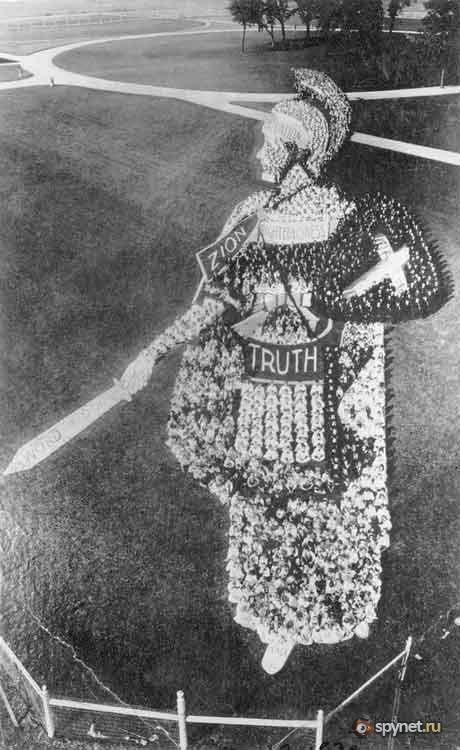
Almost a hundred years ago, without any computer processing itinerant photographer Arthur Mole (1889-1983) with the help of its 11 × 14 inch camera made some extraordinary mass of pictures in which people create images. Military and ordinary people gathered at the American patriotic symbols, emblems, military insignia, prominent aerial view.
Vivid portrait of President Woodrow Wilson, for which 21,000 Marines gathered at Camp Shenrman in Chillicothe, Ohio, made in 1918, is the most famous photos of Mola. This picture is very characteristic of the work Arthur Mole, on which he pays attention not only of the composition as a whole, but also the desire to focus on the individual shaded, of which the composition and composed.
On a hot July day in 1918 18,000 officers and soldiers posed as the Statue Svbody. According to the surviving records, many people fainted, they were dressed in woolen form, and the temperature reached 40 ° C. The photo was taken with the built for this tower. Ordered the Chicago studio, photography was used to attract recruits to the army, but never used.
For a snapshot of the Liberty Bell Arthur Mole visited Camp Dix in New Jersey and assembled 25,000 soldiers. Pictured bell with a crack in order to increase the similarity and symbolic power.
Arthur Mole called his pictures "living pictures." As conceived by the photographer they live with the help of soldiers that form images on them. On the other hand, the value of each solada decreases, giving strength throughout the composition. Live photos of Arthur Mole subtly mask the power of death, which is inseparable from society.
The process of creating the painting began with the photographer Arthur Mole rascherchival line and mark the boundaries of the future image flags. All this could take weeks, but it took only 30 minutes to arrange all participants shooting at the desired position.
Photos of Arthur Mole are now part of the Chicago Historical Society, the Museum of Modern Art and the Library of Congress.
